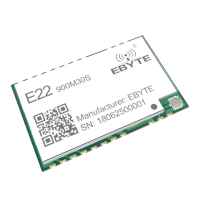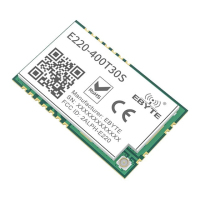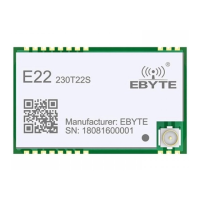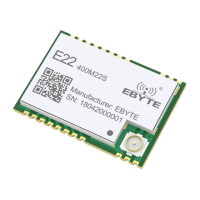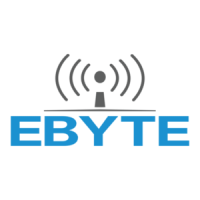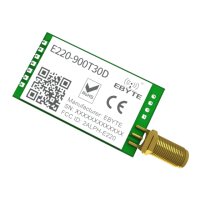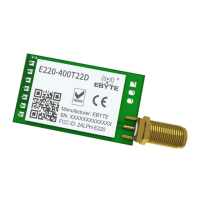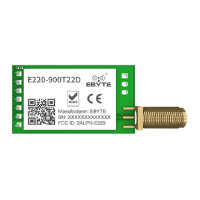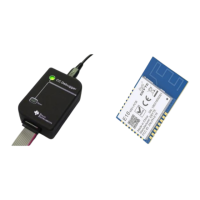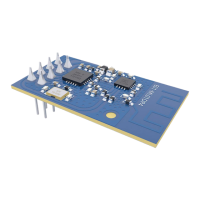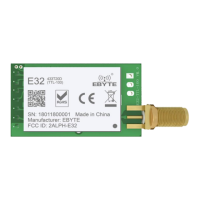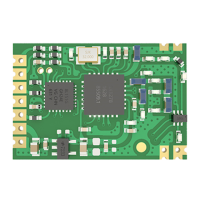Do you have a question about the Ebyte E22 T30D Series and is the answer not in the manual?
| Transmit Power | 30dBm |
|---|---|
| Interface | UART |
| Modulation | FSK |
| Antenna Interface | SMA |
| Operating Voltage | 3.3V |
| Operating Temperature | -40 ~ +85 °C |
| Encryption | AES |
Introduces the E22-xxxT30x LoRa wireless modules and their core features.
Lists the key functionalities and advantages of the E22-xxxT30x series modules.
Outlines the various application scenarios for the E22-xxxT30x modules.
Details the radio frequency parameters for the E22-xxxT30x series modules.
Specific electrical parameters for the T30D models, including voltage and current.
Specific electrical parameters for the T30S models, including voltage and current.
Hardware specifications for T30D models, covering chip, crystal, and interface.
Hardware specifications for T30S models, covering chip, crystal, and interface.
Physical dimensions and pinout details for the T30D models.
Physical dimensions and pinout details for the T30S models.
Explains the fixed-point transmission mode for data communication.
Explains the broadcast transmission mode for sending data to multiple receivers.
Details how to set up broadcasting addresses for network communication.
Explains how to set listening addresses for receiving specific data.
Describes the module reset process and AUX pin behavior during reset.
Provides a comprehensive explanation of the AUX pin's functionalities and signals.
Discusses important precautions for safely switching between different working modes.
Explains the normal operation mode (Mode 0) for data transmission and reception.
Explains the Wake-on-Radio (WOR) mode (Mode 1) for power saving.
Explains the configuration mode (Mode 2) for setting module parameters.
Explains the deep sleep mode (Mode 3) for minimal power consumption.
Details the command formats for reading and writing module registers.
Describes registers for 400/900MHz T30D and T30S models.
Describes registers for 230MHz T30D and T30S models.
Lists the factory default parameter values for the modules.
Lists all available AT commands with their descriptions and examples.
Analyzes the parameters returned by AT commands and their meanings.
Provides crucial notes and precautions for firmware upgrading.
Discusses reasons for short transmission distance and potential solutions.
Explains how modules can be easily damaged and preventative measures.
Discusses causes and solutions for high Bit Error Rate (BER).
Details the recommended reflow soldering temperature profiles.
Provides the reflow soldering temperature curve for proper assembly.
Recommends suitable antennas for optimal module performance.
